Birds - Form, Function, and Classification

Characteristics of Birds
- Forelimbs modified into wings
- Feathers
- Hollow, lightweight bones
- Endothermic
- Efficient respiration
- Heart with a completely divided ventricle (4 chambers)
- Scaley feet (birds are related to reptiles)
- furculum (wishbone)
*Ornithology is the study of birds
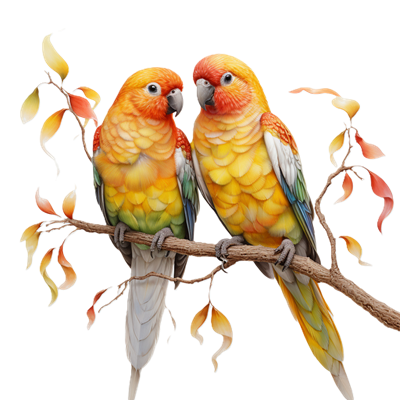
Classification
-Kingdom Animalia
---Phylum Chordata
------Subphylum Vertebrata
---------Class Aves
Feathers
Types of feathers
Down feathers - provide insulation
Contour feathers - cover head and body, provide coloration
Flight feathers - on wings and tail, provide lift
Feathers are covered in oil to keep them water proof - "like water off a duck's back" - this oil is secreted from a preen gland
Preening is a behavior that replaces the oil on feathers, and repairs broken links on the vanes
Avian respiration and circulation
A four chambered heart prevents oxygen rich blood from mixing with oxygen poor blood - it is a double-loop
Lungs are connected to air-sacs, which fill with air during inhalation. The air then is released from the air sacs when the bird exhales - this means that the bird receives oxygen during inhalation and exhalation
The lungs are connected to the trachea.
Bird Digestion
Birds digest food quickly, they can't afford the extra weight.
They have no teeth, the breakdown of food occurs in the gizzard - sometimes birds swallow rocks to assist this
The crop stores food...mother birds regurgitate food stored in the crop to their babies
Waste exits through the cloaca - and so do eggs
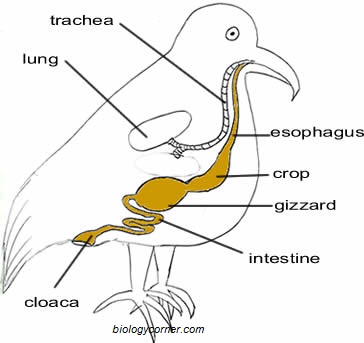
Bird Brain

* Birds have an excellent sense of sight, but most do not have a good sense of smell
*Many birds are intelligent and can solve complex puzzles
*Birds can learn to talk, but really they are just mimicking sounds they hear
Beaks and Feet
Adapted to the birds way of life. Study of the beak and the feet of a bird gives information about its lifestyle
Beaks
Short and thick - seed cracking (robin)
Long and thin, slightly curved - eating nectar (hummingbird)
Strong, chisel like - drilling (woodpecker)
Sharp, curved and pointed - tearing flesh (hawk)
Long and flattened - straining algae and plants (ducks)
Spear shaped - spearing fish (heron)Feet
3 toes in front, 1 behind - perching (robin)
2 toes in front, 2 behind - climbing (parrot)
Powerful curved talons - grasping prey (hawk)
Webbed - swimming (duck)
Long and thin - wading (heron)
Thick and stout - running (ostrich)
Bird Lifestyles
Based on the shape of the beak and the legs, determine the where each bird lives and what it eats.
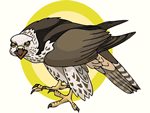
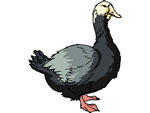
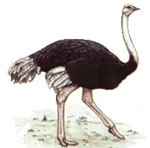
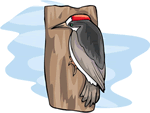
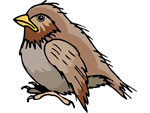
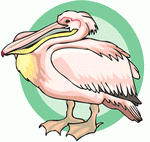
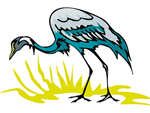
Bird Classification
Birds are classified by the beaks and their feet. There are many bird orders, but here are some of the more common orders.
Order Passeriformes - songbirds (bluebirds, robins, sparrow)
Order Falconiformes - birds of prey (hawk, falcon, eagle)
Order Anseriformes - swimming birds (duck, goose, swan)
Order Galliformes - fowl (pheasant, turkey)
Order Ciconiformes - wading birds (heron, flamingo)*You will not need to know the orders, but you should know how the birds are grouped. For example, a hawk is more closely related to a falcon than it is to a bluebird.
Courtship Behavior and Reproduction
Birds often engage in elaborate courtship behavior for mating purposes. These include:
Building nests
Dancing and posturing
Bringing gifts
Bright colorful displays
SingingSome birds mate for life, and often both parents raise young.
Two types of reproduction occur in birds:
Some birds incubate eggs for a long time - chicks are born with feathers and can walk/swim (ducks)
Some birds incubate eggs a short time - chicks are born featherless and helpless (robins)
Myths about Birds
Birds do not normally have a good sense of smell, except in carrion eaters (vultures) - a baby bird that falls out of a nest can be put back in, the mother probably won't know the difference
Bird poop you find on your car is actually a mixture of urine and solid waste - birds cannot store waste
Some birds can learn to mimic speech, like a parrot - but they can't actually communicate
Eggs bought at the supermarket are not fertilized, you cannot incubate them to hatch a chick.
The term "birdbrain" often describes someone who is stupid - in actuality, some birds are extremely intelligent and can be trained to do tricks and can solve puzzles.
The term "eats like a bird" describes someone who doesn't eat much - in actuality, birds consume a large amount of food to maintain a high metabolism (endothermic)
Some special terms to describe birds in groups.
A murder of crows
A gaggle of geese
A herd of swans
A cast of hawks
A brood of chickens
A murmuration of starlings
A watch of nightingales
A host of sparrows
A bevy of quails
Other Resources on Birds
Comparing a Human and Avian Skeleton - coloring and bone identification
Bird Beaks and Feet - view pictures of birds, make inferences about their diet and habitat
Animal Reproduction and the Amniote Egg - color the amniote egg and identify the main structures; compare to human reproduction